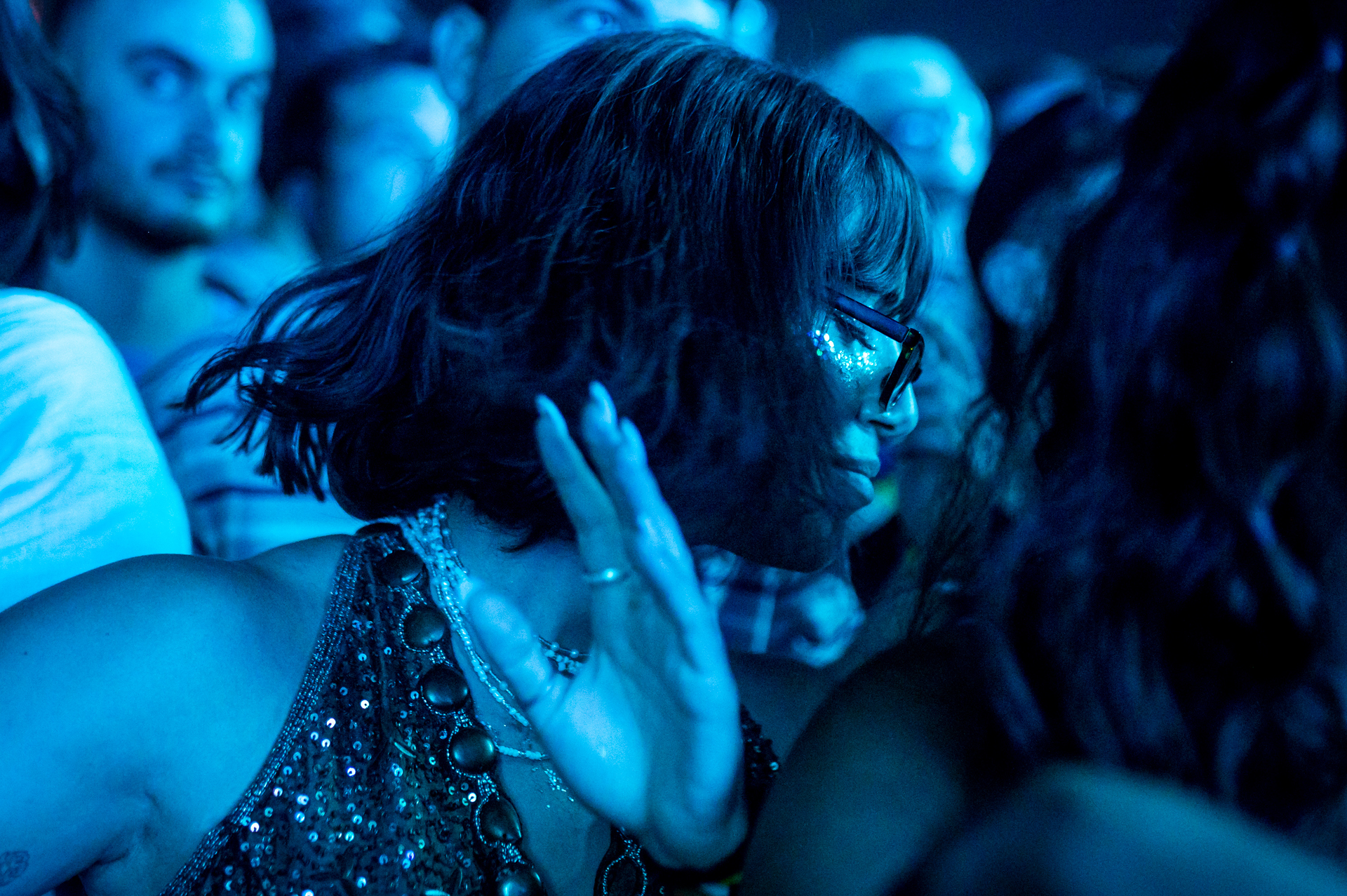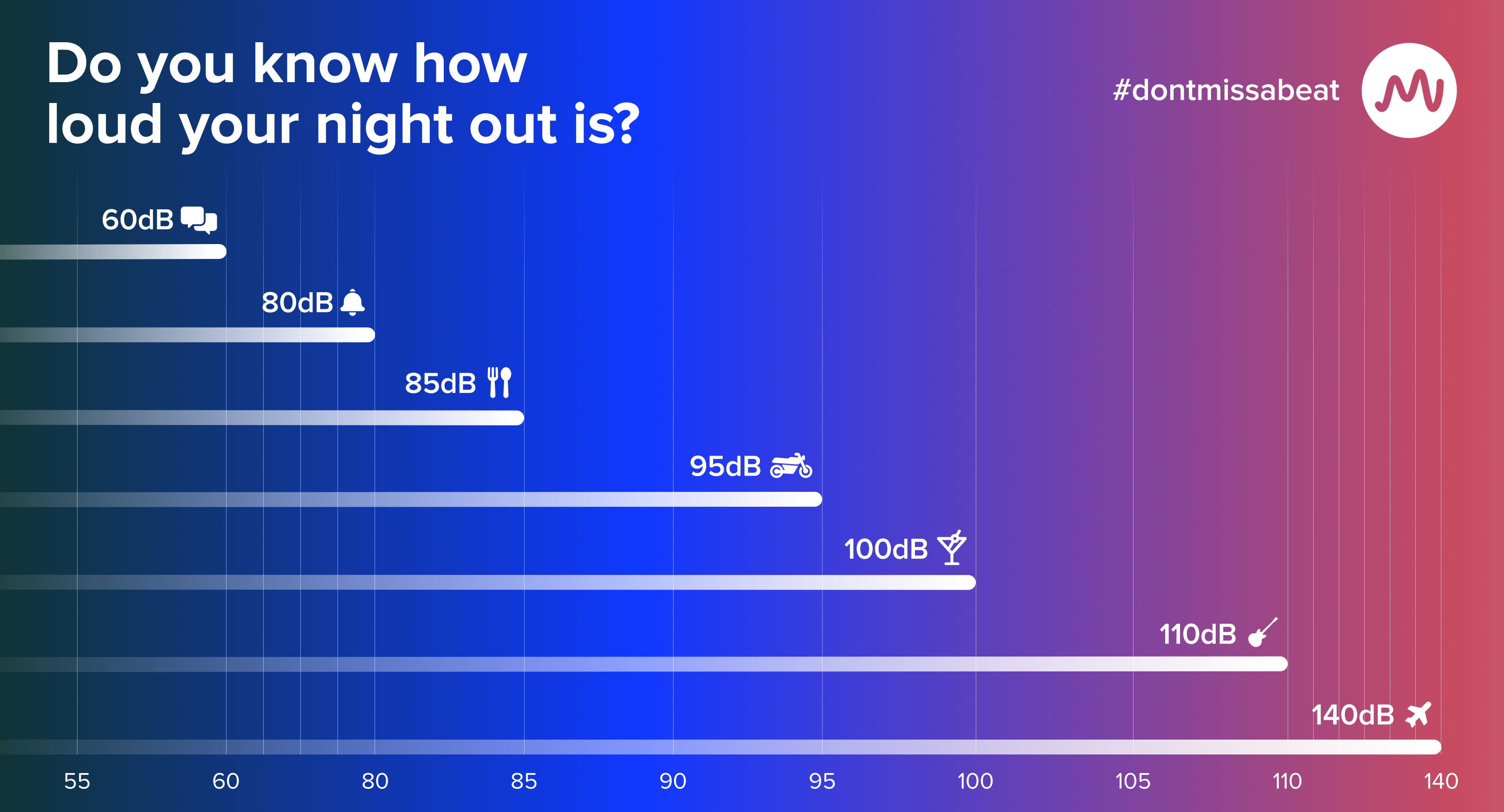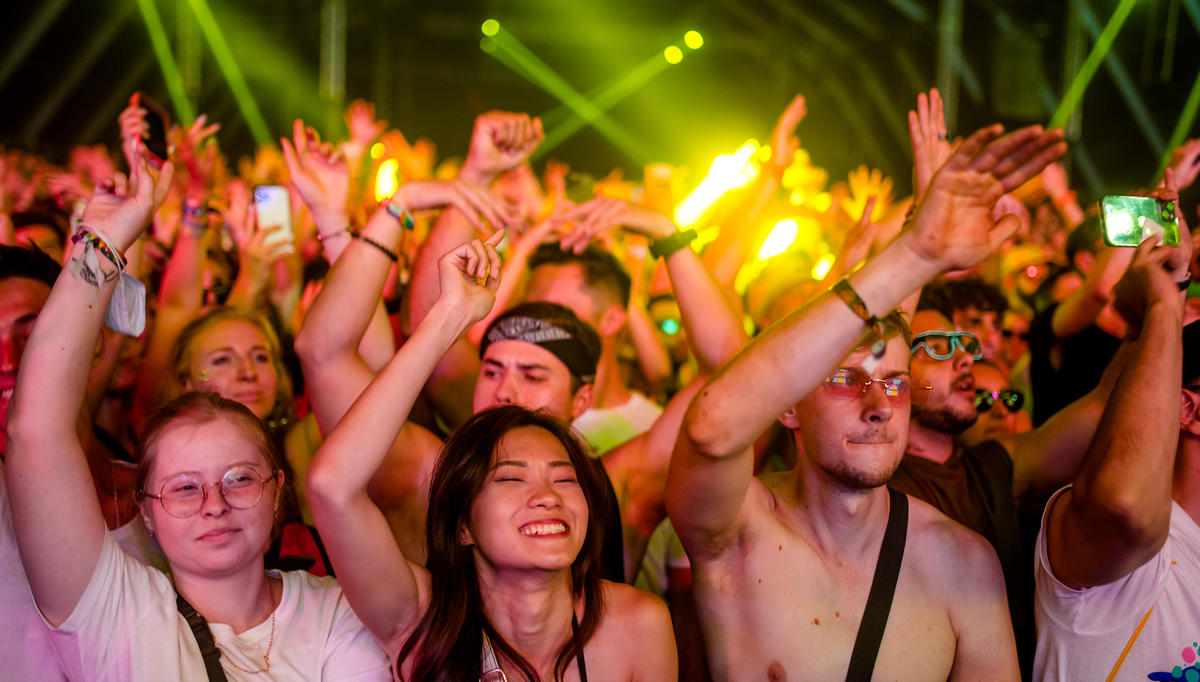It’s probably fair to say: seasoned ravers know their shit. If your go-to weekend rituals include dancing yourself to a sweaty, gleeful pulp, it’s to be expected that you’d develop some techniques for keeping their hobby vaguely sustainable.
Some dabble in supplements like magnesium, electrolytes and 5-HTP. Others pre-load carbs and carry party snacks. Many pick up skills in podiatry along the way in order to cope with 12 hours spent raving on their feet. Basically, there’s a reason the phrase ‘weekend warrior’ exists: partying takes its toll on the body.
But according to the World Health Organisation, clubbers and music fans should be aware of one more potential risk to their health, along with depleted dopamine and blisters: noise.
The grass theory and partying
Over a period of time, there is a cumulative amount of noise that your ears can take, according to Dr James Shuster-Bruce, an ENT registrar based in London and founder of Life is Loud. “Once you hit that threshold, then irreversible damage can occur,” he tells me.

To explain a little better, he shares the RNID’s analogy, which compares hearing loss to damaging a patch of grass:
“You can think of loud music affecting hair cells when you’re on a night out a bit like the way a fresh patch of grass is affected by someone trampling over it. Before the person walks on the grass, it stands upright and tall.
“Over the course of a night, someone tramples on this patch and some of the blades of grass remain flattened. Over a day or two, some of the blades of grass may pop back up, but if someone keeps trampling over the patch of grass, more damage will be done, and the damage will become permanent.”
In other words, your ears have a level of natural resilience – but only up to a certain point. And that’s where noise dosing comes in.
So - what’s a noise dose?
To put it simply – your noise dose is the amount of noise you subject your ears to over time. The W.H.O measures noise dose per week: the louder the noise, and the longer you listen to it, the more it eats into your weekly recommended noise dose limit. After that, irreversible hearing damage can take place.
Noise dosing becomes particularly relevant when we’re working with noise levels that peak above the threshold for causing damage to your ears – i.e. clubbers who spend time on thumping dancefloors, music fans who attend gigs once or twice per week, and people who work in particularly noisy settings too. In order to figure out the dose you’re typically subjecting your ears to in a given week, it’s a good idea to get an understanding of how loud the spaces are that you’re spending time in.
To get started, you can check out the below infographic, but decibel meter apps like SoundPrint and Decibel X can also give you real-time feedback about the loudness of your space, and risk of hearing loss.

So, how do I noise dose?
First: a disclaimer. Noise-dosing shouldn’t replace safe listening while at an event. Wearing earplugs and taking sound breaks at parties and shows is a non-negotiable for protecting your ears (and, in fact, also contribute to lowering that weekly noise dose in their own way).
Noise-dosing means rationing the exposure to loud noise that you subject your ears to, where possible. It’s the idea that you can also give your ears prep and aftercare by taking into account the idea of weekly noise doses.
You might, for example, decide to turn down the volume in your headphones when leading up to a big night out or festival, to give your ears a break before they’re subjected to extra noise in a club. You could schedule in rest time after a big night out, where you try to spend time in quieter spaces, with less noise around you.
For information about sonic safety, head to the Don’t Miss A Beat Hub.
You could decide to work it into your everyday life – perhaps wearing noise-canceling headphones while commuting on loud trains, putting in earplugs if the pub or bar you’re in gets too loud.
Taking a little more care with the amount of noise you’re exposing your ears to can go a long way in keeping your ears healthy.
In a world that’s getting louder and louder, prioritizing when, where and for how long you want to immerse your ears in noise is becoming a crucial way to prevent avoidable noise-induced hearing loss.
Below, we’ve dropped some tips to help you manage your noise intake per week.

Tips for noise dosing
Tune out the background noise
Dr James suggests using noise canceling headphones when you're listening to your music. “You can listen on a lower level of loudness through your appliance, and so you get less noise going to your ears.”
Let dose limiters help you
Apps like Decibel X, SoundPrint can quickly measure the noise levels of an environment and help indicate whether you’re at risk of harming your ears.
Take listening breaks at the club…
Just a 30 minute break during a 4 hour party can reduce your noise dose that night by a massive 12%. Those cuts to your sound dose really add up over time.
…and rest your ears in everyday life
“Even when listening to music all day, you can take breaks your ears as well,” says Dr James. He adds that even a five minute break every hour could help keep your ear hair cells healthy.
Practice sonic safety in loud spaces
For safe listening tips, earplug recommendations and more information on noise-induced hearing loss, head to our Don’t Miss A Beat hearing hub.




